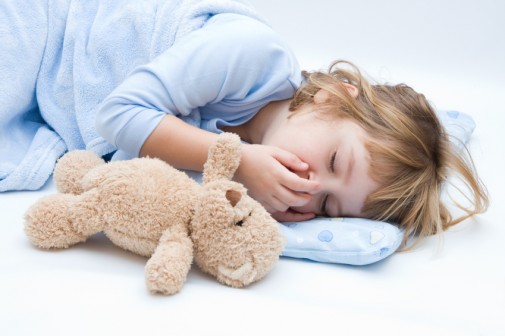
How to detect unhealthy snoring in kids

It was cute when you first noticed your toddler snoring. But there’s nothing cute about your child waking up, gasping for air. If that’s happening, it may be time to have your child tested for pediatric sleep apnea.
When people hear “sleep apnea,” they may think of the middle-aged or overweight adult who has to sleep with a mask at night—not an infant, toddler or teen. But, the reality is that obstructive sleep apnea—where large tonsils, adenoids or sometimes tissue in the larynx (voice box) make breathing difficult during sleep—is more prevalent in children than you might think.
In fact, the American Sleep Apnea Association has reported that up to 25 percent of children diagnosed with attention-deficit hyperactivity disorder could instead be suffering from obstructive sleep apnea, with their learning and behavior problems coming from a long-term lack of continuous sleep.
Children with obstructive sleep apnea have a number of symptoms, including:
- Loud snoring
- Pauses in breathing during the night
- Waking up gasping for air
- Very restless sleep
- Bed-wetting
If left untreated too long, sleep apnea can also lead to serious conditions, such as heart and lung problems.
The good news is that treatment for obstructive sleep apnea in most children is fairly simple—removing the tonsils and adenoids. Today, the number one reason for tonsillectomies in children is treatment of sleep apnea, topping the second most common reason—recurrent infection.
Every day, I see children with mild to severe sleep apnea, and the impact of a tonsillectomy on their lives and their parents’ lives is extraordinary.
Instead of mom or dad having to check in on their child every hour throughout the night or bringing the child into bed with them to monitor their sleeping, everyone is sleeping soundly and in their own beds.
Over time, behavior issues tend to subside and life returns to a much more comfortable rhythm.
I should point out that having a tonsillectomy or adenotonsillectomy is no fun. The recovery time involves the worst sore throat a child has ever had—for up to two weeks for young children and three weeks for teens.
In addition, very young children and children with Down syndrome or other conditions often have to be monitored in the hospital after surgery.
Children with severe sleep apnea may even need to continue treatment with what is called PAP or positive airway pressure therapy. These are the devices often prescribed to adults with the condition.
Sometimes a child’s sleep apnea is more serious and more difficult to treat. Children with central sleep apnea experience the same symptoms, but the condition is caused by the brain not telling the body to breathe.
The advantage of bringing your child to a medical center with pediatric ear, nose and throat specialists is that we are trained to compare the symptoms reported by parents and the physical structure of the child’s airway.
Taken together, if they don’t definitively point to obstructive sleep apnea, we’ll perform a sleep study to determine if central sleep apnea or another neurological condition is the cause. In those cases, I refer the family to a pediatric neurologist for treatment.
If your child requires a tonsillectomy, you may have to stock up on popsicles and ice cream for a few weeks after treatment, but getting your child the care he or she needs for obstructive sleep apnea can be the secret to restoring order in your home.
Related Posts
Comments
About the Author
A graduate of Vanderbilt University School of Medicine, Dr. Hamming specializes in Pediatric-Otolaryngology. She is affiliated with Advocate Children's Hospital - Park Ridge, Advocate Condell Medical Center, Advocate Lutheran General Hospital, and has offices in Niles and Chicago and Glenview and Highland Park and Libertyville and Park Ridge and Skokie. “I work at helping children be as healthy as they can be, and work with parents to help their children,” she says.








